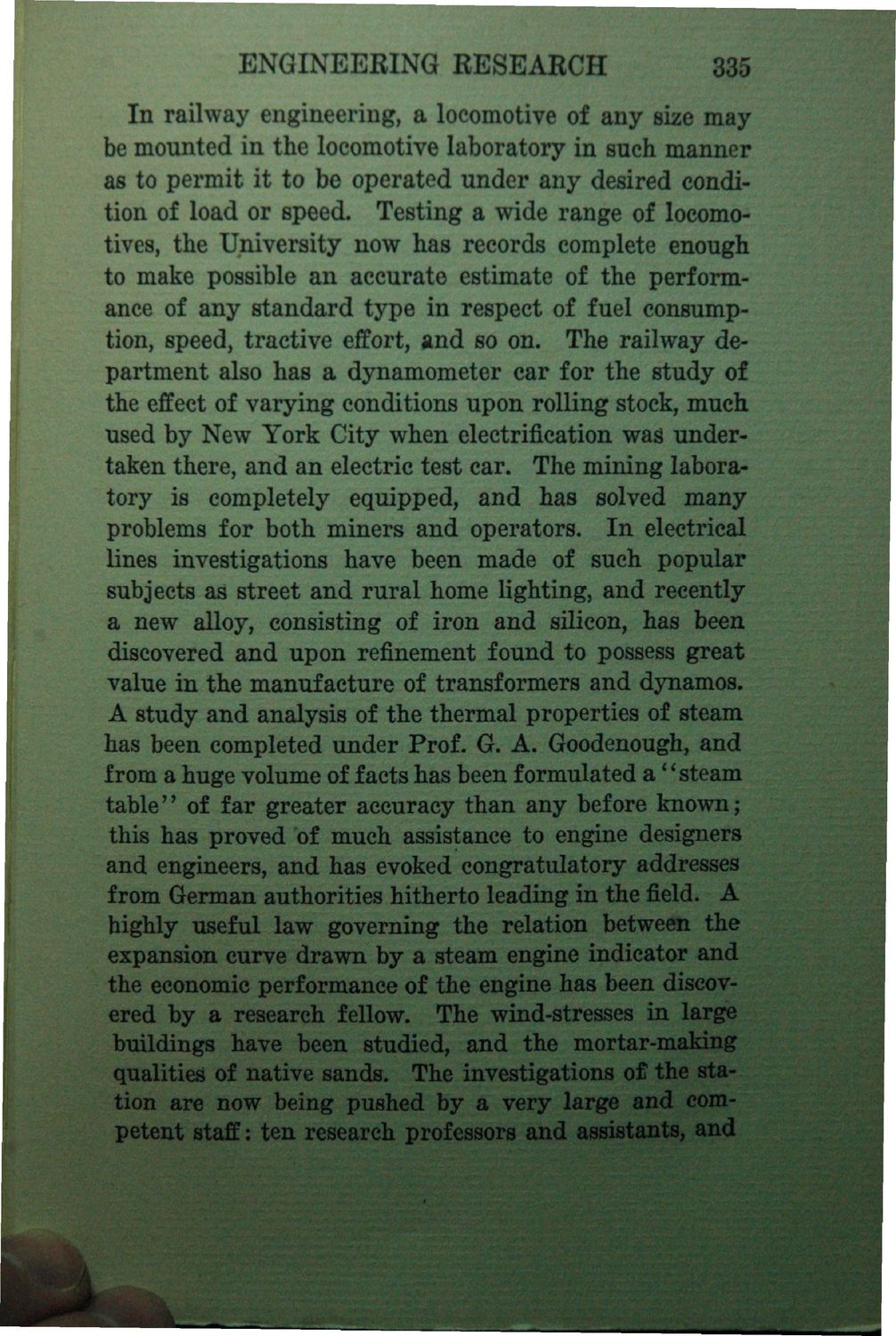| |
| |
Caption: Book - History of the University (Nevins)
This is a reduced-resolution page image for fast online browsing.

EXTRACTED TEXT FROM PAGE:
ENGINEERING RESEARCH 335 In railway engineering, a locomotive of any size may be mounted in the locomotive laboratory in such manner as to permit it to be operated under any desired condition of load or speed. Testing a wide range of locomotives, the University now has records complete enough to make possible an accurate estimate of the performance of any standard type in respect of fuel consumption, speed, tractive effort, and so on. The railway department also has a dynamometer car for the study of the effect of varying conditions upon rolling stock, much used by New York City when electrification was undertaken there, and an electric test car. The mining laboratory is completely equipped, and has solved many problems for both miners and operators. In electrical lines investigations have been made of such popular subjects as street and rural home lighting, and recently a new alloy, consisting of iron and silicon, has been discovered and upon refinement found to possess great value in the manufacture of transformers and dynamos. A study and analysis of the thermal properties of steam has been completed under Prof. G. A. Goodenough, and from a huge volume of facts has been formulated a "steam table" of far greater accuracy than any before known; this has proved "of much assistance to engine designers and engineers, and has evoked congratulatory addresses from German authorities hitherto leading in the field. A highly useful law governing the relation between the expansion curve drawn by a steam engine indicator and the economic performance of the engine has been discovered by a research fellow. The wind-stresses in large buildings have been studied, and the mortar-making qualities of native sands. The investigations of the station are now being pushed by a very large and competent staff: ten research professors and assistants, and
| |